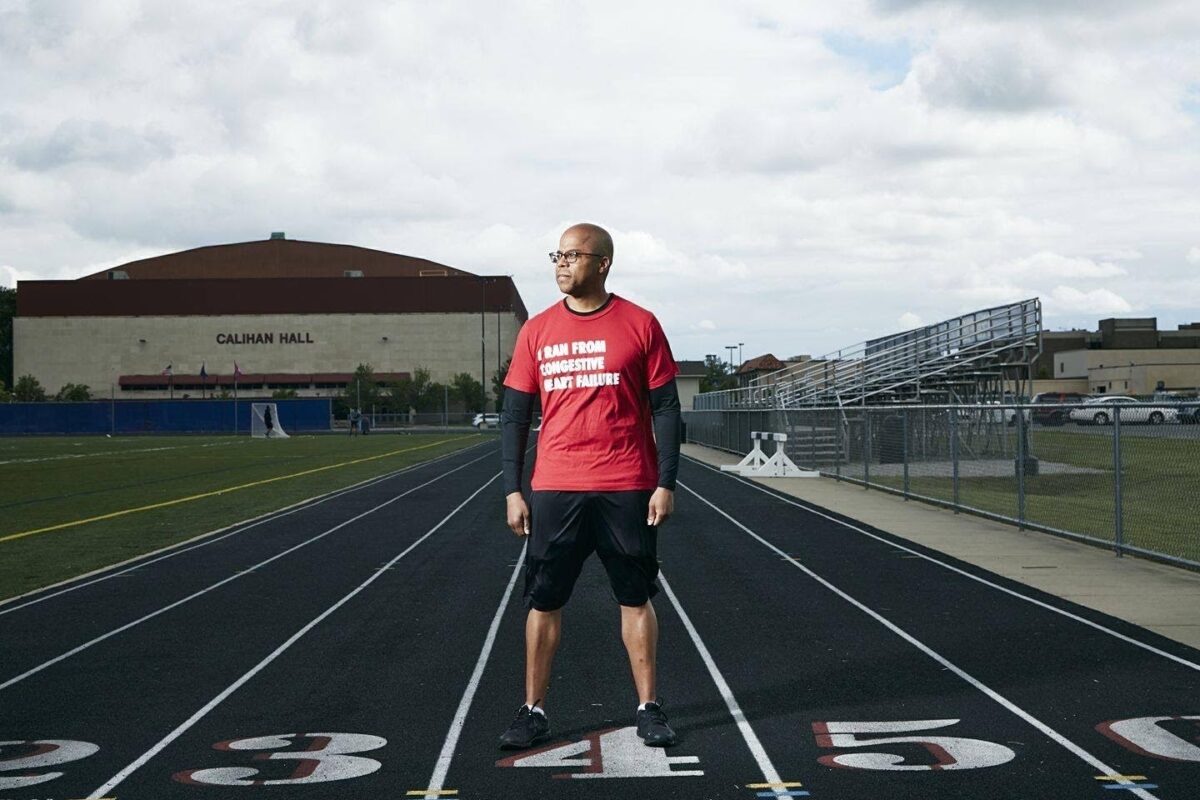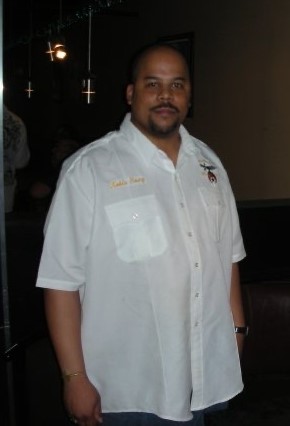Near-death experience inspires MPH student to get healthy, help others
Written By: Rebecca Hoffa, rhoffa@purdue.edu

Pursuing his Master of Public Health, James Young II is working toward his goal of advancing healthier communities.Photo provided
College of Health and Human Sciences graduate student James Young II was less than a week from death when he walked into a Detroit, Michigan, emergency room in September 2011 and received a series of substantial diagnoses: heart failure; cardiomyopathy, which reduces the heart’s ability to pump blood; enlargement of the heart; kidney disease; and diabetes.

James Young IIPhoto provided
Now pursuing his Master of Public Health (MPH) degree through Purdue University Online, Young hopes to help prevent others from experiencing similar health crises.
“I’m interested in public health because there are communities that exist in this country where environmentally they don’t have the access to go outside and exercise freely — maybe due to not having the environment set up that way or maybe due to crime or safety issues,” Young said.
Experiencing the symptoms
Leading up to his diagnoses, Young lived an unhealthy lifestyle — making poor diet choices, consuming alcohol excessively, not exercising, not staying properly hydrated and not managing his blood pressure. Further, lack of medical insurance prevented Young from having a primary care doctor, which resulted in no preventative healthcare measures.
When the symptoms started showing up, Young chalked it up to allergies or sinus issues, taking over-the-counter cold and sinus medications.
“When I began to experience those common symptoms, which were the excessive breathing or being out of breath as well as retaining of fluid in my system, coughing up a lot of phlegm and things of that nature, all those things I began to do was called self-diagnosis, which is something you shouldn’t do,” Young said.
As his health declined, a friend of the family recommended Young go to Covenant Community Care, which offers people in the Detroit metropolitan area low-cost healthcare services. There, Young was given medication and pre-diagnosed with heart failure.
One day, Young found himself in the waiting room of the clinic unable to breathe. Upon going outside, he found himself looking up at the sky, gasping for breath. When the doctors and nurses rushed out to help him, they sent him to the emergency room immediately. There, he was told he would have had a week or less to live if he hadn’t come to the hospital that day.
“Eventually I got the message while I laid in bed there in my first stay in the hospital,” Young said. “Going on Google and reading more about these various conditions I’d been diagnosed with, that’s when I kind of figured the severity of what I was undergoing.”
Getting on the right track

Young lived an unhealthy lifestyle prior to receiving his diagnoses in 2011. Photo provided
Young was able to manage his conditions through a variety of medications. He began regularly visiting a local high school track to get more physically active and started eating healthier. He even started completing half marathons to track his fitness progress.
After reaching this health milestone, in 2015, he decided he wanted to help others who might be struggling with heart health issues. He began volunteering with the American Heart Association (AHA) and now serves as a national ambassador.
“Since I had success, I wanted to do more outreach and be a part of something else bigger than myself,” Young said. “I thought what better organization to do that than the American Heart Association.”
After joining the AHA’s strategically focused research network, Young developed an interest in going back to school to finish his bachelor’s degree at Eastern Michigan University. In fall 2021, he began his online master’s program in Purdue’s Department of Public Health.
“The committees I sat on for the AHA highly recommended I apply to Purdue,” Young said. “It has a global reputation.”
Advocating for healthier hearts
Young said the MPH program has transformed his knowledge about the field and is helping him work toward his goal of establishing a nonprofit organization focused on improving social determinants of health, both related to heart health and beyond.
“The whole point of me pursuing this program was to further enhance my understanding about public health, globally,” Young said. “I’ve learned tremendously a lot about behavioral health and the various theories about behavioral health, the importance of quantitative research and biostatistics, and how to run those different types of analyses. Learning more about public administration has been great as well as learning how to analyze health organizations and how to create intervention programs. All these variances of public health are really going to help me be successful in that pursuit.”
According to the Centers for Disease Control and Prevention, every 34 seconds, one person dies from cardiovascular disease in the United States. Young said this is a growing and evolving concern, both nationally and globally.
“We live in this society where we have such a diet of high-processed foods, foods that are high in fat and cholesterol, just unhealthy things that have a plethora of availability in society,” Young said. “As a result, a lot of folks are acquiring heart disease at earlier ages than traditionally. Sometimes we relate heart disease to the ailing, aging population or the senior or elder population. Things have changed a bit with that. Now, it’s impacting younger people — I was 40 when it impacted me. I’ve also talked to folks who were in their 30s or even as young as their mid-20s who have some form of chronic cardiovascular disease.”
However, Young noted individuals can take steps now through a healthy diet, exercise and regular primary care visits to maintain their heart health. Young said even stress can have an impact on heart health, so it’s important to monitor and catch symptoms early.
“You can’t see high blood pressure; you can’t see hypertension; you can’t see the stress in a physical form, but nonetheless it can have just as much damage and ill-effect to a person as eating too many cheeseburgers,” Young said. “It’s definitely important to keep those things under watch as best you can. Just have those blood pressure devices, the oxy meter, things of that nature around just to see where you are here and there is very important.”
Discover more from News | College of Health and Human Sciences
Subscribe to get the latest posts sent to your email.